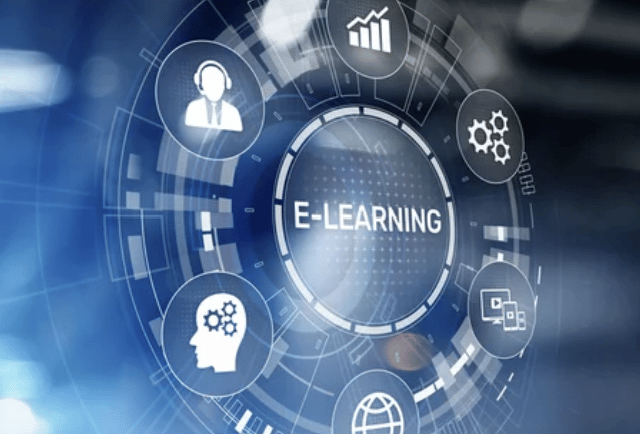The Power of eLearning: Accommodating All Learning Styles with Quality Instruction
Power of eLearning


Introduction: In the quest to provide effective education, the idea of catering to individual learning styles—whether visual, auditory, reading/writing, or kinesthetic—has gained significant attention. While the intention is noble, research suggests that focusing too much on teaching to a learner’s preferred style may not always lead to better outcomes. Instead, what truly matters is the quality of instruction that incorporates diverse approaches to engage all learners. eLearning excels in this regard, offering a balanced and inclusive educational experience that accommodates all learning styles without being confined to any one.
Understanding Learning Styles: Learning styles refer to the different ways people prefer to absorb and process information. Commonly categorized as visual, auditory, reading/writing, and kinesthetic, these styles are often seen as indicators of how best to teach individual learners. However, numerous studies have proven that teaching strictly to a learner’s preferred style DOES NOT enhance learning outcomes. Instead, it’s been found that effective teaching often involves using a variety of methods that engage multiple senses and cognitive processes.
Why Quality Instruction Matters More Than Learning Styles:
Comprehensive Learning: Teaching to only one preferred learning style can limit the depth and breadth of understanding. Quality instruction that incorporates various methods ensures that learners engage with the material in multiple ways, leading to a more comprehensive grasp of the subject matter.
Cognitive Development: Learning is not just about reinforcing strengths; it’s also about challenging learners to develop new skills. By exposing learners to a variety of instructional methods, educators encourage the development of versatile learning strategies, which are crucial for adapting to different situations and challenges.
Research Findings: Studies have shown that learning is more effective when instructional strategies are aligned with the content itself, rather than the learner’s supposed preference. For example, a complex scientific concept might be best understood through a combination of visual diagrams, hands-on experiments, and explanatory text, regardless of whether the learner identifies as a visual or kinesthetic learner.
How eLearning Accommodates All Learning Styles with Quality Instruction: eLearning platforms are uniquely positioned to deliver high-quality instruction that caters to a variety of learning preferences, without being limited to any one style. Here’s how:
1. Diverse Multimedia Content
Visuals and Graphics: eLearning platforms incorporate diagrams, videos, and infographics that help learners visualize complex concepts, which benefits not only visual learners but also enhances understanding for all learners.
Audio Narration and Podcasts: For auditory learners, eLearning often includes audio narration and podcasts that complement visual content. However, even learners who don’t identify as auditory can benefit from listening to explanations, as it reinforces the material in a different way.
Interactive Simulations: Kinesthetic learners benefit from interactive simulations and virtual labs that require active participation. But these activities also deepen understanding for other learners by providing a hands-on perspective that can solidify abstract concepts.
2. Engagement Through Interaction
Quizzes and Assessments: Regular quizzes, whether text-based or interactive, help reading/writing learners reinforce their knowledge. Yet, these assessments are crucial for all learners, as they provide opportunities to reflect on and apply what has been learned.
Discussion Forums and Collaborative Projects: Social elements like discussion forums and group projects are often seen as beneficial for social learners, but they also promote critical thinking and communication skills in all participants, broadening their educational experience.
3. Personalized Learning Paths
Adaptive Learning: eLearning platforms can personalize learning paths based on performance, ensuring that all learners, regardless of their style, engage with content at an appropriate level of difficulty. This adaptation is about supporting the learner where they are, not just about catering to a specific style.
Flexible Access to Content: Learners can revisit lessons, engage with different types of content, and move through courses at their own pace. This flexibility allows them to interact with the material in a way that suits their needs at any given moment, providing a holistic learning experience.
4. Balanced Instructional Design
Integrated Learning Experiences: The best eLearning courses use an integrated approach that combines visuals, audio, text, and interactivity. This balanced design ensures that all aspects of the material are covered in a way that is accessible to every learner.
Focus on Learning Objectives: Effective eLearning prioritizes the learning objectives over the method of delivery. By focusing on what needs to be learned rather than how it’s delivered, courses ensure that all learners reach the desired outcomes, regardless of their preferred style.
Conclusion: While the idea of teaching to a specific learning style may seem appealing, the true key to effective education lies in quality instruction that embraces a variety of teaching methods. eLearning platforms excel in this area, offering diverse, flexible, and engaging content that accommodates all learning styles without being confined to one. By focusing on high-quality instructional design that integrates multiple approaches, eLearning ensures that every learner, regardless of their preference, has the opportunity to succeed. In the end, it’s not about matching instruction to a single style—it’s about creating rich, varied learning experiences that help all learners thrive.
